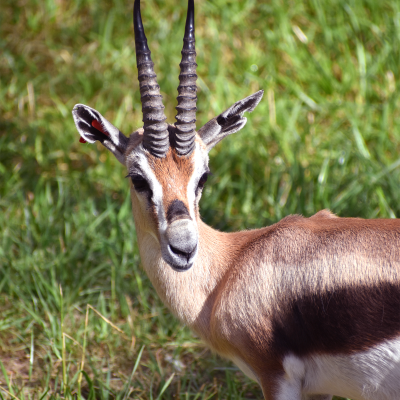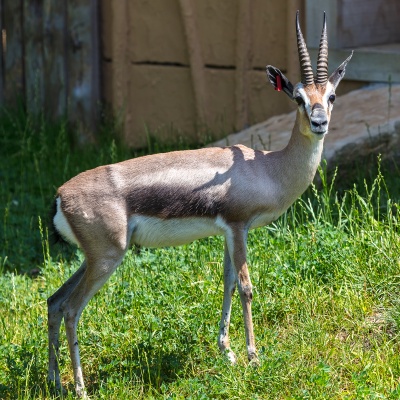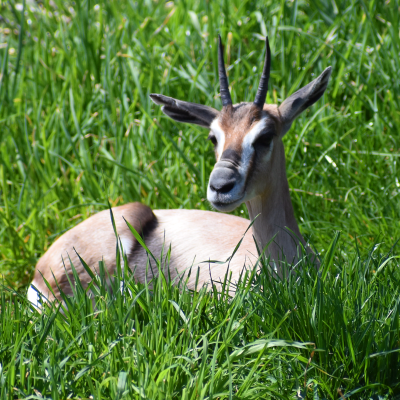About Speke’s Gazelles
Speke’s gazelles are the smallest species of gazelle. They are named after the English explorer John Hanning Spekes, who searched for the source of the Nile in the Horn of Africa during that time period. When fully grown, these gazelles weigh roughly 33-35 lbs., and stand 1.5-2 ft. at the shoulder. Males are larger than females and may weigh as much as 40 lbs. Speke’s gazelles have mostly brownish-fawn coloring with a white underbelly. Dark black stripes along each side separate these colors. Both males and females have slightly “S” shaped horns which may be up to 10 in. long. The males are typically larger than the females with longer and thicker horns.
Speke’s gazelles are social animals who live in herds of 5-12 animals. When food is scarce, these herds may merge to create groups of up to 20. There are two types of herds formed by these gazelles: breeding herds and bachelor herds. In a breeding herd, one dominant male controls a harem. Females decide where to graze while the male tries to keep the females within his .5 to 1.5 miles territory. Males will mark their territory by urination, defection and a scent from their preorbital gland (located where our tear ducts are). Speke’s gazelles also have three to five nasal folds which they can inflate and enlarge when feeling threatened. This creates a hollow chamber that amplifies the gazelle’s calls to a loud snort, sneeze or honk. These amplified calls may be used to communicate dominance.
Speke's gazelles are crepuscular, meaning they are most active at dawn and dusk. Like most animals in this hot climate, they rest throughout midday. Predators include cheetahs, lions, wild dogs, hyenas, leopards and pythons.
Speke's Gazelle at the Akron Zoo
Our Speke’s gazelle can be found in the Landon & Cynthia Knight Pride of Africa area. She shares her habitat with white storks and guineafowl.
- Sagal – female, born July 30, 2021 – daughter of Gondar




